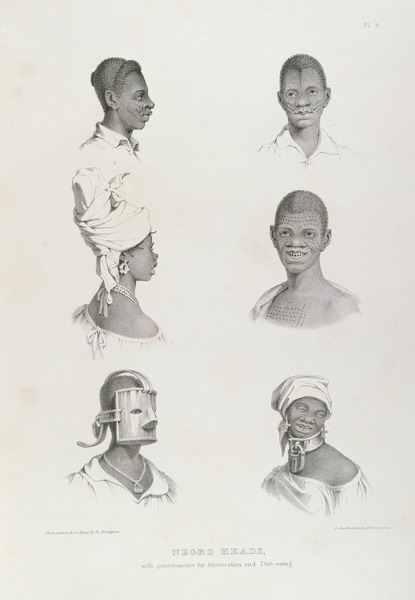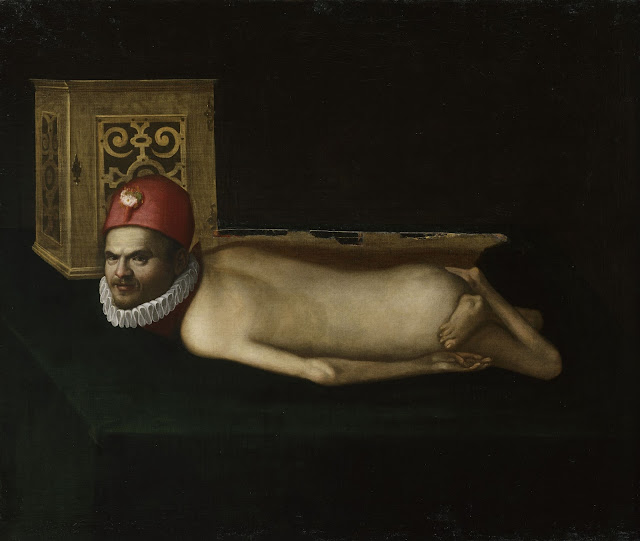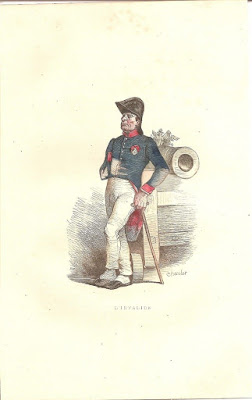Subversive Access: Disability History Goes Public in the United States
By Catherine Kudlick
(Paul K. Longmore Institute on Disability, San Francisco State University)
In summer 2015, the Paul K. Longmore Institute on Disability at San Francisco State University mounted an interactive, multi-media exhibit “Patient No More: People with Disabilities Securing Civil Rights". We faced several daunting challenges that ultimately made our installation like no other. In fact, we have been sharing our process with museum professionals and continue to learn as we go.
First, the story itself: on April 5, 1977, more than 100 Americans with and without disabilities began a twenty-six day occupation of San Francisco’s Federal Building to insist on getting civil rights. Four years earlier, Section 504 of the Rehabilitation Act of 1973 made it illegal for any facilities or programs funded by the national government to discriminate against disabled people. One official’s signature stood in the way of the law taking effect. After four years of waiting, a coalition made up people with different disabilities launched protests across the country. San Francisco’s occupation proved the most involved and successful. In fact, thanks to support from local community groups like the Black Panther Party, Glide Memorial Church, the Gay Men’s Butterfly Brigade, as well as local and national politicians, it remains the longest unarmed take-over of a federal building in US history. The occupation itself and subsequent victory gave birth to a national disability rights movement and helped pave the way for passing Americans with Disabilities Act (ADA) thirteen years later in 1990.
From the beginning we knew that telling the story itself needed to be interwoven with innovative forms of access. Put another way, as we progressed, we increasingly appreciated how in many respects these features quite literally embodied the historical content of our exhibit. The Ed Roberts Campus (ERC) offered an exciting, if truly daunting canvas for “Patient No More.” The ERC is located across the bay from San Francisco in Berkeley, where it houses many disability organizations and services. Opened to much acclaim in 2011, the universally-designed building was the architectural embodiment of what disability rights activists had been fighting for since the 1960s. Following the theory of “build it in, don’t bolt it on,” designers tried to anticipate the full array of different people with disabilities who would want to use it, from wheelchair riders to blind and deaf people to autistic people. They thought of nearly everything: a giant ramp, floor texture, natural lighting, a fountain to provide audible location cues, restroom stalls big enough for everyone, automatic doors, and more.
The ERC’s fluid layout, limited number of electrical outlets, need for us to easily move the exhibit kiosks in and out so they could hold public events added yet another layer. And we had limited funds. Meeting these fascinating challenges by building them into our process and design from the outset ultimately introduced opportunities to create a public history exhibit like no other and even to introduce elements of playfulness for visitors.
So, just like the enterprising disabled person faced with an environment designed with other body types in mind, we gravitated to the parts of the Ed Roberts Campus that did work for us and designed the exhibit to fit accordingly. We clustered kiosks around power outlets and came up with a story told through themes rather than chronology so a visitor could start anywhere and circle back. Everything could pivot on casters and be tucked away.
One of the most striking features of our exhibit was a 70-foot mural that depicted the protests. The wall above the iconic Ed Roberts Campus red ramp was an intimidating blank canvas. We spent hours trying to decide which photos to include, what sizes, what story to tell. Our challenge became even clearer as we debated how to deal with access for people who couldn’t see it. Standard practice would have been to label each photo in some way (“Top row, photo 1,” “Second row, photo 1” etc.). Of course we did provide a Braille binder and the audio description tracks that we provided online also contained that information. But this struck us as unsatisfying and dull, at least if it was our only attempt to render the images non-visually. We needed to find something that would be true to our mission to incorporate access to everything in our exhibit, though not necessarily in the same way for everyone.
Our solution: commission two poets who identified as people with disabilities to respond creatively with sound poems. Their interventions added another dimension to the mural while resulting in something completely different, especially since we didn’t insist the poets provide description. But this raised a further challenge for Deaf visitors wouldn’t be able to hear the recordings. Thus we hired an ASL interpreter with a reputation for interpreting songs and poetry. And of course we provided captions too.
We also used Braille innovatively. Few museum access professionals appreciate ways that the tactile reading system does and doesn’t work. They think of it visually rather than spatially and tactually; too often Braille labels appear where they look best or at least where they won’t “get in the way” of the item (assuming there is Braille at all) rather than where a blind person might actually find it. Including Braille in our exhibit design from the beginning, we built what we called a “Braille rail” that was the same central place on each exhibit panel. Our curator/exhibit designer planned every kiosk so that the rail became a unifying design feature that helped organize the distribution of images and text. And the square casing could hide lots of wires that powered our video monitors. At the last minute, as we were installing the exhibit, we discovered that wheelchair users were put off by this feature because they couldn’t tell what it was, and assumed there was something beyond reach on these seemingly useless counters. We rushed to add the words “Braille rail” (in print and Braille) for each kiosk, and everyone quickly understood.
Our most audacious flourish was to include what I called “subversive dots” to the rails – i.e., some additional information so that blind Braille readers could enlighten their sighted friends. We let news of this spread by word of mouth and mentioned it on tours of the exhibit for blind people, who were delighted. A few sighted people were perplexed; our explanation that it gave blind people a rare chance to be experts at an exhibit gave everyone food for thought.
From the experience of “Patient No More," I’d like to share three general comments/observations that I hope will provoke public history conversations:
Recommended Citation
Catherine Kudlick (2016): Subversive Access: Disability History Goes Public in the United States. In: Public Disability History 1 (2016) 10.
(Paul K. Longmore Institute on Disability, San Francisco State University)
In summer 2015, the Paul K. Longmore Institute on Disability at San Francisco State University mounted an interactive, multi-media exhibit “Patient No More: People with Disabilities Securing Civil Rights". We faced several daunting challenges that ultimately made our installation like no other. In fact, we have been sharing our process with museum professionals and continue to learn as we go.
First, the story itself: on April 5, 1977, more than 100 Americans with and without disabilities began a twenty-six day occupation of San Francisco’s Federal Building to insist on getting civil rights. Four years earlier, Section 504 of the Rehabilitation Act of 1973 made it illegal for any facilities or programs funded by the national government to discriminate against disabled people. One official’s signature stood in the way of the law taking effect. After four years of waiting, a coalition made up people with different disabilities launched protests across the country. San Francisco’s occupation proved the most involved and successful. In fact, thanks to support from local community groups like the Black Panther Party, Glide Memorial Church, the Gay Men’s Butterfly Brigade, as well as local and national politicians, it remains the longest unarmed take-over of a federal building in US history. The occupation itself and subsequent victory gave birth to a national disability rights movement and helped pave the way for passing Americans with Disabilities Act (ADA) thirteen years later in 1990.
 |
| 1977 disability protests in San Fransisco. Photographed by Anthony Tusler © |
From the beginning we knew that telling the story itself needed to be interwoven with innovative forms of access. Put another way, as we progressed, we increasingly appreciated how in many respects these features quite literally embodied the historical content of our exhibit. The Ed Roberts Campus (ERC) offered an exciting, if truly daunting canvas for “Patient No More.” The ERC is located across the bay from San Francisco in Berkeley, where it houses many disability organizations and services. Opened to much acclaim in 2011, the universally-designed building was the architectural embodiment of what disability rights activists had been fighting for since the 1960s. Following the theory of “build it in, don’t bolt it on,” designers tried to anticipate the full array of different people with disabilities who would want to use it, from wheelchair riders to blind and deaf people to autistic people. They thought of nearly everything: a giant ramp, floor texture, natural lighting, a fountain to provide audible location cues, restroom stalls big enough for everyone, automatic doors, and more.
The ERC’s fluid layout, limited number of electrical outlets, need for us to easily move the exhibit kiosks in and out so they could hold public events added yet another layer. And we had limited funds. Meeting these fascinating challenges by building them into our process and design from the outset ultimately introduced opportunities to create a public history exhibit like no other and even to introduce elements of playfulness for visitors.
So, just like the enterprising disabled person faced with an environment designed with other body types in mind, we gravitated to the parts of the Ed Roberts Campus that did work for us and designed the exhibit to fit accordingly. We clustered kiosks around power outlets and came up with a story told through themes rather than chronology so a visitor could start anywhere and circle back. Everything could pivot on casters and be tucked away.
One of the most striking features of our exhibit was a 70-foot mural that depicted the protests. The wall above the iconic Ed Roberts Campus red ramp was an intimidating blank canvas. We spent hours trying to decide which photos to include, what sizes, what story to tell. Our challenge became even clearer as we debated how to deal with access for people who couldn’t see it. Standard practice would have been to label each photo in some way (“Top row, photo 1,” “Second row, photo 1” etc.). Of course we did provide a Braille binder and the audio description tracks that we provided online also contained that information. But this struck us as unsatisfying and dull, at least if it was our only attempt to render the images non-visually. We needed to find something that would be true to our mission to incorporate access to everything in our exhibit, though not necessarily in the same way for everyone.
Our solution: commission two poets who identified as people with disabilities to respond creatively with sound poems. Their interventions added another dimension to the mural while resulting in something completely different, especially since we didn’t insist the poets provide description. But this raised a further challenge for Deaf visitors wouldn’t be able to hear the recordings. Thus we hired an ASL interpreter with a reputation for interpreting songs and poetry. And of course we provided captions too.
We also used Braille innovatively. Few museum access professionals appreciate ways that the tactile reading system does and doesn’t work. They think of it visually rather than spatially and tactually; too often Braille labels appear where they look best or at least where they won’t “get in the way” of the item (assuming there is Braille at all) rather than where a blind person might actually find it. Including Braille in our exhibit design from the beginning, we built what we called a “Braille rail” that was the same central place on each exhibit panel. Our curator/exhibit designer planned every kiosk so that the rail became a unifying design feature that helped organize the distribution of images and text. And the square casing could hide lots of wires that powered our video monitors. At the last minute, as we were installing the exhibit, we discovered that wheelchair users were put off by this feature because they couldn’t tell what it was, and assumed there was something beyond reach on these seemingly useless counters. We rushed to add the words “Braille rail” (in print and Braille) for each kiosk, and everyone quickly understood.
Our most audacious flourish was to include what I called “subversive dots” to the rails – i.e., some additional information so that blind Braille readers could enlighten their sighted friends. We let news of this spread by word of mouth and mentioned it on tours of the exhibit for blind people, who were delighted. A few sighted people were perplexed; our explanation that it gave blind people a rare chance to be experts at an exhibit gave everyone food for thought.
From the experience of “Patient No More," I’d like to share three general comments/observations that I hope will provoke public history conversations:
- People with disabilities should be integral members of the exhibit team at every level rather than brought in only as consultants or testers at the end; in fact, an exhibit design team should be considered inadequate without at least one or two people with disabilities playing key roles.
- Anyone setting up a public history exhibit should imagine the possibility of there being docents with disabilities, including blind docents; this would add an extra dimension to the experience and ultimately make visits more interactive.
- Access is a work in progress, so it should be approached s something fluid, evolving, as a source of adventure where some things will inevitably go wrong, but that’s ok; when people are open to it, the dialogue and planning will bring many rewards.
Recommended Citation
Catherine Kudlick (2016): Subversive Access: Disability History Goes Public in the United States. In: Public Disability History 1 (2016) 10.


